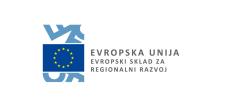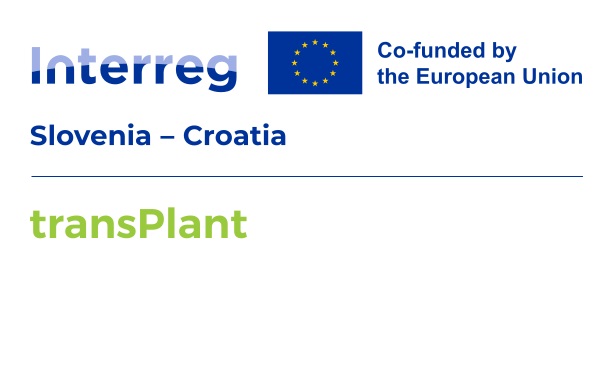Integrative crossborder conservation of Natura 2000 plant species and their habitats
Principal Investigator at ZRC SAZU
Mateja Breg Valjavec, PhD-
Original Title
Integralna čezmejna zaščita Natura 2000 rastlinskih vrst in habitatov
-
Acronym
transPlant
Project Team
Mateja Breg Valjavec, PhD, Rok Ciglič, PhD, Matjaž Geršič, PhD, Lenart Štaut, Špela Čonč, PhD, Prof. Andraž Čarni, PhD, Aljaž Jakob, MSc-
Project ID
SIHR00142
-
Duration
1 April 2024–30 September 2026 -
Lead Partner
-
Project Leader
-
Financial Source
Interreg Slovenia - Croatia

European Regional Development Fund

Partners
Research Centre of the Slovenian Academy of Sciences and Arts, Ljubljana, Slove…, Region of Istria, Pula, Croatia, University of Primorska, Koper, Slovenia, National park Risnjak, Crni Lug, Croatia, Škocjan Caves Public Service Agency, Matavun, Slovenia, Municipality of Matulji, Matulji, Croatia, Institute of the Republic of Slovenia for Nature Conservation, Ljubljana, Slove…
Global biodiversity has experienced natural, relatively slow and sometimes sudden ups and downs, possibly due to climate change or major events. Empirical evidences suggest that since the Anthropocene, humans have been one of the main factors influencing global and local biodiversity patterns. Its influence can be indirect (through its impact on changes in global or regional climate) or direct, through threats to organisms and their habitats. Species living in areas with pronounced ecological gradients in the rugged karst landscape are particularly vulnerable to climate change.
For example, a number of studies have shown that the upper tree line is shifting to higher altitudes, meaning that organisms and their habitats above the line are increasingly threatened. While models have already been developed for the loss of habitat and species due to the shifting upper tree line, there are no models yet that address the issue of lowering the natural lower tree line; especially not for the Cross-Border Program Area (CBPA), where temperature and vegetation inversion occurs in the high karst basins. The habitat below the lower tree line represents unique remnants of former glacial vegetation, which are now surrounded by dense forests. Such habitats are also inhabited by the Cerastium dinaricum, a Natura 2000 (N2K) species with a fragmentary distribution along the Dinaric Alps. The Slovenian population, which is restricted to a single karst basin, consists of only about 20 individuals and is threatened with extinction.
Active conservation measures, including storage of seeds, habitat mapping or identification of potential habitats, strengthening populations and translocations are essential to ensure the long-term survival of the species in the CBPA and should be planned and coordinated at the transboundary level. Similar measures are also needed for the Arabis scopoliana, which also belongs to the N2K species and occurs in similar habitats. The lack of knowledge about its biology and population genetics represent a challenge for monitoring on both sides of the border. Some conservation measures will be taken for both species and guidelines for joint cross-border management plans proposed.
The eastern sub-Mediterranean dry grasslands, which develop on karstic terrain, are among the most species-rich habitats of the CBPA and represent a valuable natural and cultural heritage. The most immediate threat to their existence is the abandonment of traditional agricultural use, fragmentation and overgrowth. The Klasea lycopifolia, a N2K species with only a few populations in the CBPA, is particularly threatened. Active in-situ and ex-situ conservation measures are required for this species. These include permanent seed bank, molecular genotyping of populations, identification of suitable populations for translocations, habitat modelling, habitat restoration and the development of joint transboundary management plans. The project is a pilot project to improve the species' habitat and restore completely degraded dry grasslands. The seeds of the N2K plant species of the dry grasslands of the CBPA will also be permanently stored in a new transboundary seed bank network system.
Based on active conservation measures to be carried out in the field, knowledge of the current distribution of the species and understanding the impact of climate change in the future, biology, population genetics and reproductive status of the populations, the proposed project will develop a strategy for the conservation of the three N2K species in the transboundary area. The strategy will be developed in co-operation with stakeholders and users of the area as well as the interested public. It will contribute to improved conservation planning for the species in the CBPA by providing protocols for the integration of relevant knowledge, planning and implementation of conservation and monitoring measures in the transboundary area.
The issue of protection and monitoring of the status of N2K species needs to be implemented in a transboundary manner in co-operation between the Slovenian and Croatian authorities, as these species are unique populations in a unique and specific biogeographical area that needs to be managed in the same way. Currently, transboundary management plans have not yet been developed in the CBPA based on the knowledge of the species' biology and expected future climate change.
